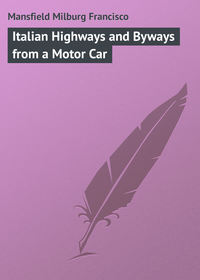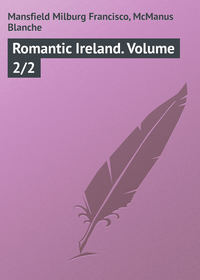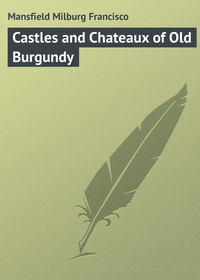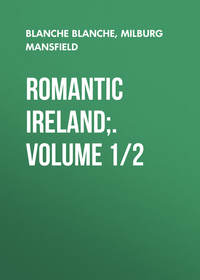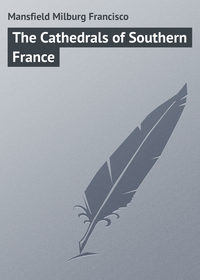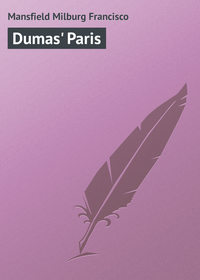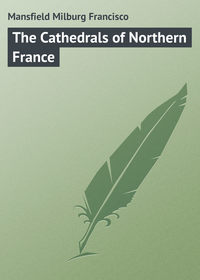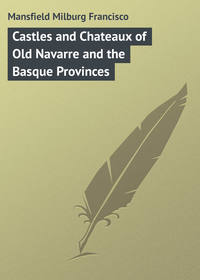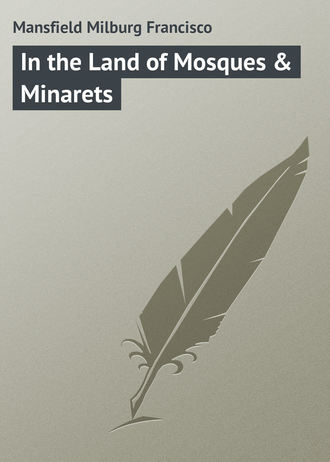 полная версия
полная версияIn the Land of Mosques & Minarets
The town is very ancient, and its name is derived from the word meaning dock, or cale, hence it is not difficult to trace its origin back to a great seaport of history. Its commerce has been exploited since 1560 by Marseillais merchants; but in spite of this it is to-day more Italian than French.
The coral industry is still great, but here, too, the supply is on the wane. It has been fashionable for too long a time, in spite of the traffic in pink celluloid and porcelain, which furnishes most of the “coral” to kitchen maids and midinettes.
With the falling off of the coral industry, the sardine fishery has developed, and now the little fishes boiled in oil, the universally popular hors d’œuvre, are as likely to have come from the harbour of La Calle as the Bay of Douarnenez. They are not so good as the latter variety (though as a fact the sardine is a Mediterranean fish, only caught in northern waters because it migrates there in summer), but they are a good deal better than the Nova Scotia or Norway sardines of commerce, which are not sardines at all.
From the coast down into the interior Constantine, the Cirta of the ancients, looms large in the roll-call of antiquity. After the Numidian kings came Sittius with the backing of Cæsar, and the whole neighbouring region blossomed forth with prosperous and growing cities, Mileum (Mila), Chellu (Collo), and Rusicade (Philippeville). Among Cirta’s famous men was Fronton, the preceptor of Marcus Aurelius. In the latter days of the Empire and under Byzantine domination, Cirta became the capital of a province, as is the Constantine of to-day.
Constantine’s Roman remains are not many to-day. Those of the great bridge across the Gorge of the Rummel are the principal ones. Various antique constructive elements are readily traced, but the present bridge swings out boldly away from the old stone piers, leaving the Roman bridge an actual ruin and nothing more. Its keystone did not fall until 1858, though probably the actual arch of that time only dated from the century before, as great works of restoration, perhaps indeed of entire reconstruction, were then undertaken by Salah-Bey.
Near Constantine, on the road to Kroubs, is the absurdly named Tomb of Constantine, absurdly named because this Græco-Punic monument could never have been the tomb of Constantine from its very constructive details, which so plainly mark its epoch. It is nevertheless a very beautiful structure, – what there is left of it. Moreover it is a mausoleum of some sort, though the natives call it simply souma or tower.
Its ground-plan and its silhouette are alike passing strange, though plain and simple to a degree.
Another tomb in this province which is one of the relics of antiquity (over which archæologists have raved and disputed since they got into competition by expressing their views and printing books about them) is the tomb of Médracen or Madghasen, on the road from Constantine to Batna.
It is a great cone of wooden-looking blocks of stone, a sort of pyramidal cone, with a broad, flat base. At a distance it looks like a combination of Fingal’s Cave and the Pyramid of Cheops.
Supposedly this was a royal mausoleum, the burial-place of Médracen. The entrance to this really remarkable monument was discovered in 1850, but only recently has its ground-plan been made public by those secretive antiquarians who sometimes do not choose to give their information broadcast.
El Bekri, the Arab writer of the eleventh century, wrote something about this monument which, being rediscovered in later centuries, led to investigations which unearthed a monument according to the above plan.
In the interior of the Constantinois, between Constantine and Biskra, in the midst of that wonderfully fertile plateau of the Tell, are three magnificently interesting Roman cities, Lambessa, Timgad, and Tebessa. They are only to be reached from Batna by diligence, by hired carriage, or by automobile, – if one has one, and cares to take chances on getting through, for of course there are no supplies to be had en route. The distance from Batna to Tebessa – where one is again in touch with the railway, a branch leading to the Bona-Guelma line at Souk-Ahras – is about a hundred and eighty kilometres.
A placid contemplation of one or all of the cities making up this magnificent collection of Roman ruins in the heart of Africa will give one emotions that hitherto he knew naught of.
Batna itself is not a tourist point, though an interesting enough place to observe the native as he mingles with the military and the European civilization. “Batna-la-bivouac” the city is called, because of the great military post here. It is not a dead city, but a sleeping one. At its very gates rises the conical tomb of the Numidian king, Massinissa. Just before Batna is reached by the railway, coming from El Guerrah, is Seriana, so known to the Arabs, though the French have recently renamed it Pasteur, after the illustrious chemist. The site is that of the ancient Lamiggiga. A dozen kilometres or more out into the plateau lands to the northwest is Zana, the ancient city of Diana. Here still exist two great triumphal arches, one of a single bay and the other of three, the latter constructed by the Emperor Macrin in 217 A.D. A temple to Diana formerly here has disappeared, but before its emplacement is a great monumental gateway still in a very good state of preservation. There are also vestiges of a Byzantine fortress.
From Batna to Lambessa, on the road to Timgad, is a dozen kilometres. The ruins of the Lambæsis of the Romans are of enormous extent, even those so far uncovered to view, and much more remains to be excavated.
The Third Legion of Augustus, charged with the defence of North Africa, here made their camp in the beginning of the second century of our era, and the outlines of this camp are to-day well defined.
Of the monumental remains, the Prætorium is a vast quadrangular structure in rosy-red stone most imposingly beautiful. The forum is plainly marked, and near by are the baths, with their heating-furnaces yet visible; and the ruined arcades of an amphitheatre crop up through the thin soil in a surprising manner. The eastern and western gateways of this vast military camp are still more than fragmentary in silhouette and outline.
Farther on is a great three-bayed arch built under Septimus Severus and a pagan temple to Esculapius. The Capitol, in its ground-plan, and with respect to a great part of its walls, stands proud and magnificent as of yore. It was dedicated to Jupiter, Juno, and Minerva. The ruins of a Roman aqueduct lie to the south of the Capitol.
To the north, a matter of four kilometres or so, is a pyramidal tomb to Flavius Maximus, Prefect of the Third Augustan Legion.
Close beside all this buried treasure is the great government penitentiary. Two thousand Turk, Jew, and Arab thieves and murderers are there shut up; when they want exercise, they are given a pick and shovel and set to work as one of the “outside contingent,” digging away the débris of ages from these magnificent Roman ruins. This is the sort of criminal labour which doesn’t affect competition. The forçats of Algeria accomplish some good in life after all.
Timgad is twenty-five kilometres beyond Lambessa, and, though only the site of a ruined Roman city, founded under the Emperor Trajan, has hotel accommodation of a very acceptable, if not luxurious, kind (Hotel Meille).
One should take a guide, once arrived at Timgad, to save time, otherwise he may worry it all out with the map herewith.
Sidi Hassin, our guide at Timgad, was a man of medium size, young, thin and muscular, with an incipient scraggy beard. He was dressed modestly and even becomingly, for he had not mingled Manchester goods with his haïk and burnous woven in some Kabyle village. On his head was a little round turban, and his sandals were laced with leather thongs. He was decidedly a home-made product. His compressed visage bespoke energy and intelligence, and a little mocking laugh, a sort of audible smile, was ever on his lips, in strong contrast to the melancholic indifference of the average Arab.
Sidi Hassin seemed the right sort of a philosopher and friend for our journey around Timgad, so we took him as soon as he offered his services. His recommendation for the job was, in his own words, as follows:
“Tu es sous le doigt de Dieu et sous le mien! Je réponds de toi. Tu reviendras sain et sauf.”
Thamugadi was founded by Trajan in the year 100 A.D., the actual labour being the work of the soldiers of the Third Legion, then encamped at Lambessa. Thamugadi, a foyer of Roman civilization in a still barbarous land, was of great importance and wealth. It lived in security and prosperity until the early part of the sixth century, when it was destroyed by the Berbers.
More luxuriously disposed even than Lambessa, Timgad presents the very ideal of a ruined Roman city. It had not, perhaps, the wealth of Pompeii, and it had not Pompeii’s wonderful background of Vesuvius and the Bay of Naples, but it was more ample and more splendid in its arrangements than any other ruined Roman city left for tourists to marvel at to-day.
The French “Service des Monuments Historiques” began excavating Timgad’s ruins in 1881, and now one is able to locate with accuracy the various civic and military structures. These cover such a large territory that the city must ever take rank as one of the most interesting ruins unearthed to this date.
The ground-plan here given explains it all precisely, and the reader is referred to the “Guide Illustré de Timgad,” on sale at the Hotel Meille, for detailed descriptions which cannot be elaborated here.
A Byzantine fortress, built under Justinian in the sixth century, is also here. It was an outpost or defence which guarded the pass through the rock wall of the Aures, from the high plateau of Numidia to the Lybian Desert to the south. Its thick walls, two metres or more, are still flanked by eight towers.
From Timgad to Kenchela is some seventy kilometres, and is covered by diligence once a day, the journey taking twelve hours and costs ten francs. You pass several foums, or springs, and cross several oueds or river-beds on the way, and finally, after a steep climb, you reach Kenchela, built upon the site of the ancient Mascula, one of the contemporaries of Lambæsis and Thamugadi.
To-day Kenchela has nothing for the tourist but its Hôtel de France, and its Monday market, which like other indigène markets is full of iridescent local colour and life. Near by, on the flank of the mountains, were Roman baths, known as the Aquæ Flavianæ, passed by on the road from Timgad. Two huge pools, one round and the other square, are all that remain to-day.
To reach Tebessa from Kenchela one may take the railway to Ain-Beïda, – a matter of fifty kilometres. There are no ruins en route except at Ksar-Baghai, a great Byzantine fortress built by Justinian. Its square donjon and round towers look like those of the feudal strongholds of Europe. They are not the least African.
From Ain-Beïda to Tebessa is another eighty-eight kilometres of well-laid modern roadway. It is covered by a daily diligence in ten hours, at a cost of fifteen francs.
Tebessa is a worthy rival of Lambessa and Timgad. Its ruins are many to-day. The most notable ones are Caracalla’s Arch of Triumph, a temple of the same epoch (the beginning of the third century of our era), and innumerable finds preserved in the local museum. The great arch is a stupendous and very beautiful work, and the temple worthy to rank with the Maison Carrée at Nîmes, the svelt proportions and marble Corinthian columns of which are its chief features.
The present city of Tebessa sits in the midst of a vast expanse scattered with Roman ruins and surrounded by the still existing Byzantine walls built by one Salomon, a general of the Legion of Justinian.
These walls have stood for thirteen centuries, restored from time to time, until now, with the coming of the French, the aspect of the modern walled city has the disposition given above. Fourteen rectangular towers, including the massive fortress-gate of Caracalla, add considerably to the value of the defences.
Not only at Tebessa, but all around for a radius of twenty-five kilometres, the ground is strewn with old Roman and Byzantine relics; notably at Morsott, where has recently been unearthed the site of the ancient Theverte of the Romans. It is entirely a new discovery, and what great finds may ultimately be brought to light, no one as yet can conjecture.
Two basilicas have already been brought to the surface, two isolated mausoleums, a vast monumental gateway, a drinking-fountain of astonishing proportions, baths, and many beautiful and practically undefiled mosaics.
These ruins are scattered over an area of seven thousand square metres, and, almost without exception, their preservation is in such a condition that, so far as outlines are concerned, one is able to construct anew what must have been a very important centre of Roman civilization. This group of neighbouring Roman towns and cities of the past, beginning with Tebessa and ending with Lambessa, form perhaps the most curious and extensive area of Roman ruins to be found to-day within a like radius.
The first exploration of the ruins of Morsott was through the means of the “Société Archéologique” of Constantine, but the French government has stepped in and claimed them for its own and classed them as “Monuments Historiques,” which means that no more will strangers be able to lug away with them as excess baggage a Roman capital, to be used as a garden seat at home. This is right and proper, the most passionate collector will admit.
CHAPTER XXII
TUNIS AND THE SOUKS
“A travers la douceur de tes jeunes jardinsJe m’avance vers toi, Tunis, ville étrangère.Je te vois du haut des gradinsDe ta colline d’herbe et de palmes légères.”By sea one approaches Tunis through the canal which runs from La Goulette to the quais and docks in the new town of Tunis; and one pays the company which exploits the harbour works four francs for the privilege. It’s progress if you like, but it’s about the most expensive half a dozen miles of travel by water that exists in all the known world.
By land one arrives by railway, and is mulcted a similar amount by some red-fezzed, nut-brown Arab for pointing out the way to your hotel. The porteurs, portefaix, and faccini who carry your luggage at Tunis are most importunate. If they happen to tumble your trunk overboard, they still strike you for their pay. You say: “Pourquoi vous donnerais-je?” And the answer is: “Parceque c’est moi qui a perdu votre malle.” Moral, travel light. You take your choice, it’s only four francs either way. And truly it is worth it, for there is nothing, short of Constantinople or Cairo, as Oriental as old Tunis, the Tunis of the souks, of the mosques, and minarets. The other Tunis, that one down by the docks, and the new-made land lying before the Arab quarter, is as conventionally twentieth-century as Paris or New York. It is very up to date (a sign of prosperity and progress), and that’s what the French and native government officials are working for. Tunis is the coming land of exploitation, a little corner of the globe as rich in the products of nature, mines and fruits and vegetables, as any other wherever found.
The Lake of Tunis is no longer seething with the variegated commerce of old; things are more prosaic with steam than with sail, but to pass through her sea-gate is to be surrounded by the people of the Bible, the Arabian Nights, and the Alhambra of the days of the Moors. Tunis is the veritable gate of Eastern life, of the life of Haroun-Al-Rachid. The European city by the harbour is of to-day. The walled native city is almost unconscious of the existence of modern Europe. It is the most interesting tourist resort of North Africa, more so than Algiers by far, with its souks, its proximity to Carthage, and its Orientalism.
Tunis is a city of consulates. Not all of them have business to transact, but still they are there, the consulates of all nations under the sun. “Do you have many of your country people to look after?” the writer interrogated of one accredited from a South American government, a German, by the way, whom he met in a Tunis café. He replied: “But there are none of my government’s people here; they neither live here, trade here, nor pass through as tourists, as do the English and Americans.” “What then do you do?” he was asked. “I correspond with my government.” “Well, why not be frank about it, that is what most consuls and consulates do!” The expatriate who wants help or even information from his government’s representative is usually met by some underling, who at once begins edging him toward the door and says guilelessly: “This office has no information on that subject,” or, “I really don’t know myself; you’ll have to see the consul, but just at present…”
These receptions are stupefying in their asininity, but they come to pass in most consulates, and those at Tunis are no exception.
Tunis’ Arab town is less spoilt by the encroachment of outside influences than that of Algiers. Day or night, it is a wonderful chapter from the “Arabian Nights” that one lives, as he strolls aimlessly up one narrow, twisting ruelle and down another. Here is a great towering minaret of a mosque which seemingly does business at all hours, and there is a synagogue which has Saturday for a busy day. The perfume-sellers of the Souk des Parfums are Mohammedans, and intersperse religion with business; the saddle-makers, jewellers, and leather-workers are often Jews, and attend strictly to business for six days in the week and shut up shop on Saturday, make their necessary devotions quickly and stand around on their door-sills the rest of the day dressed in their holiday clothes. All castes and creeds are here, from the Italian chestnut-vendor to the Jew old-clo’ dealer, and from the desert nomad horse-dealer to the town-bred Arab who wears a silk burnous and carries a cane.
The souks or bazaars of Tunis are the chief delight of the stranger, and certainly no such “shopping” can be done elsewhere as here; no, not even at Cairo, for, after all, Tunis is “less spoiled” than Cairo, though even here the stranger is a fair mark for the Arab trader, who augments his price a hundred per cent. You must bargain with the Oriental, be he Arab, Turk, Jew, Hindu, Chinaman, or Japanese, and the further east you go, the more the necessity for bargaining.
One of the pleasantest features of travel for many, no doubt, is visiting the shops. Travellers should, however, exercise judgment and discrimination, and should take a little trouble to ascertain what are the genuine specialties of the place. “Articles de touriste” should at all times be avoided; nine cases out of ten they are made to sell. At Tunis, as at Cairo or Constantinople, one is painfully at the mercy of his guide, who, if he can, takes him to the large shops, which, as a rule, deal mainly in pseudo-curios, or articles manufactured solely for strangers. These are invariably the shops where the enterprising shopkeepers pay the guides the largest commission. No doubt the farce of solemnly presenting coffee to the purchaser, a custom which the tourist has been told by his guide-book to expect, is effective “playing-up,” but the innocent stranger may rest assured that while he is thus literally imbibing the Oriental atmosphere, he will pay for it as well in the bill. He may not notice it, but it is there.
The most characteristic finds to be had in Tunis to-day are the fine old mirrors, made at Genoa and Florence for wealthy Turks and Arabs of a hundred or two years ago; moucharabias, stolen from some Moorish house; the thousand and one decorations of tile and baked clay which are unmistakable as to their genuineness; and good Kabyle silver jewelry. There are one or two shops in the European quarter where one can be confident he is getting the real thing, and where they sell it by weight, at two hundred francs a kilo.
In another category, more or less tawdry to be sure, but ever fascinating to the stranger, are such things as stuffed lizards, gazelles’ horns and skins, panther and jackal skins, curious engraved boxes covered with camel-skin, negro tom-toms, castanets, amulets, and pottery, Arab knives, daggers and muskets, Morocco slippers, saddle-bags and purses, Touareg weapons and leather goods, ostrich eggs and feathers, copper bowls and ornaments.
Perhaps the above suggestions will seem prosaic and matter-of-fact to the sentimental traveller, to whom the very word bazaar offers a suggestion of romantic adventure, to say nothing of the possibility of real “discoveries.” But in places of tourist resort bargaining is no longer conducted after the stately fashion of the “Arabian Nights,” when the purchase of a brass tray or an embroidered saddle-cloth was a solemn treaty, and the bargain for a lamp a diplomatic event, not to be lightly undertaken or hurriedly concluded. To-day it is simply a businesslike transaction in which the golden rule plays a no more prominent part than it does in Chicago’s wheat-pit. There is the coffee-drinking left, to be sure, but that is only part of the game.
The foreign element has made astonishing inroads into the trade of Tunis, and the Italian, the Greek, the Maltese, and the Jew are everywhere working at everything. The Jew, more than any other race, has made the greatest progress, as the following tale, or legend, if it be not entirely a veracious tale, will show.
A Jew of Tunis a couple of centuries ago commissioned a French merchant to order for him a cargo of black hats, green shawls and red silk stockings. When, however, the goods arrived, the Jew repudiated the order. Haled before the Bey, who in those days administered justice himself, the Jew denied not only the order, but also all knowledge of the French merchant. “Where are your witnesses?” asked the Bey of the Frenchman. “I have none, Sire,” he replied, “not even a line of writing. The order was given me verbally by the Jew.” “Then,” decided the Bey, “as it is only oath against oath, I cannot pronounce judgment in your favour.” The Frenchman walked sadly away, knowing that this meant to him absolute ruin. Hardly had he reached his home, when he was amazed and alarmed by a great tumult in the streets. Hurrying out to ascertain its cause, he found a vast crowd, mostly Jews, following one of the Beylical entourage, who was making the following proclamation: “Every Jew who, within twenty-four hours after the issue of this proclamation, shall be found in any street of Tunis without a black beaver hat on his head, a green shawl round his shoulders, and silk stockings on his legs, shall be forthwith seized and conveyed to the first court of our palace, where he will be publicly flogged to death.” Within an hour the French merchant’s shop was besieged by Jews eager to pay him any price he chose to ask for his derelict cargo of black hats, green shawls and red silk stockings.
If the foregoing tale proves anything, it proves hatred of the Jews and love for the French, and if that state of affairs does not exist to its fullest extent in Tunis to-day, every competent observer can but remark that the Tunisian, be he Jew or Berber, under combined French and Beylical rule is very well cared for indeed.
The life of Tunis is, as might be supposed, very mixed. A Tunisian Arab will sometimes marry a European, though not often; but never a Jewess. There is a tale of a certain Arab shopkeeper of the Souk d’Etoffes who married a stranger from overseas. How the tryst was carried on is not stated, but married they were, and of course everybody was shocked; not because it was everybody’s business, but because it was nobody’s business.
“Does she really love him?” asked the ladies around the tea-tables at the Tunisia Palace Hotel when the tale was recounted.
“Well, they look happy,” said the discoverer of the ménage, “and joy lasts seven days, or seven years, they say.”
“It makes me just sick,” said a new-made bride, doing her honeymoon in the Mediterranean.
“How long has she been married?” asked another; this time a spinster.
“Oh, about two years, and they tell me she gets thinner and thinner each year. It’s the case of oil and water, – the East and the West, – they can’t mix.”




